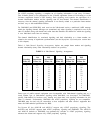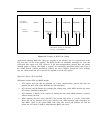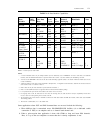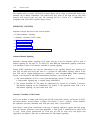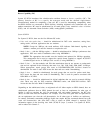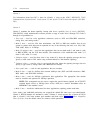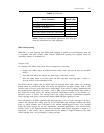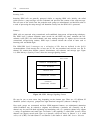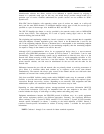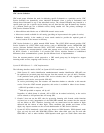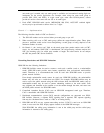
INTRODUCTION
1-23
Bearer Capability (BC)
System 85 R2V4 introduced the administration attribute known as bearer capability (BC). The
primary function of BC is to specify the transport mode and the channel requirements
(clear/restricted) needed for completing a data call. BC is used for determining compatibility when
non-ISDN facilities are connected to ISDN facilities, including originated calls, terminated calls, and
tandem connections. BC must be administered for all trunk groups, every extension’s class- of-service
(COS), and all Automatic Route Selection (ARS) routing-pattern preferences.
System 85 R2V4
For System 85 R2V4, there are the five different BC codes:
0
1
2
3
4
Voice and voice-grade data — should be administered for DCP voice extensions, analog lines,
analog trunks, and data applications that use modems.
NOTE: Except for 56K-bps, the trunk attribute AVD indicates 24th-channel signaling and
whether a modem pool must be inserted to complete the call.
Mode-1 data — with the 56K-bps option — should be administered for 56K-bps synchronous data
applications. DCP uses mode-2 handshake unless using MPDM/M1*.
NOTE: The appropriate data module must be installed and optioned for 56K-bps operation.
This arrangement can be used to support the special format required to support ACCUNET
switched digital service or 56K-bps basic service (if using MPD/M1*).
Mode-2 data — for data modules and EIA data terminations that do not operate as packet-mode
data and are optioned for the following data rates: low, 300, 1200, 2400, 4800, 9600, 19.2K-bps.
When appropriate, trunk groups that route to DS1/DMI/ISDN-PRI facilities should be
administered for mode 2 data. DCP inverts the data and uses mode-2 handshaking.
Mode-3 data — should be administered for trunk groups that are used for packet mode data.
DCP inverts the data and uses mode-3/2 handshaking. This is used for patterns associated with
ISDN-BRI or PC-PBX.
Mode-0 data — should be administered for digital endpoints that are used to transmit 64K-bps
data. These may only be DCP extension, DMI-BOS trunks, and ISDN-PRI facilities. DCP
inverts the data and uses Mode 2 handshaking.
Depending on the administered value, an originated call will either require an ISDN channel, have an
administered preference that an ISDN channel be used, or have no requirement for what type of
facility is used to complete the call. For terminated calls and tandem connections, the BC class
(BCC) for both links must be compatible. For example, voice and voice-grade data are equivalent to
the no requirement case since the call characteristics for all other types of facilities are satisfactory.
In contrast, B-channels transmitting 64K-bps digital data require that the connected channel have the
same call characteristics (the same BCC) such as where an ISDN channel is required. This
information appears in the traveling class mark (TCM) IE (layer 3) codeset 7 in System 85 R2V4,
and in codeset 6 in Generic 2.



